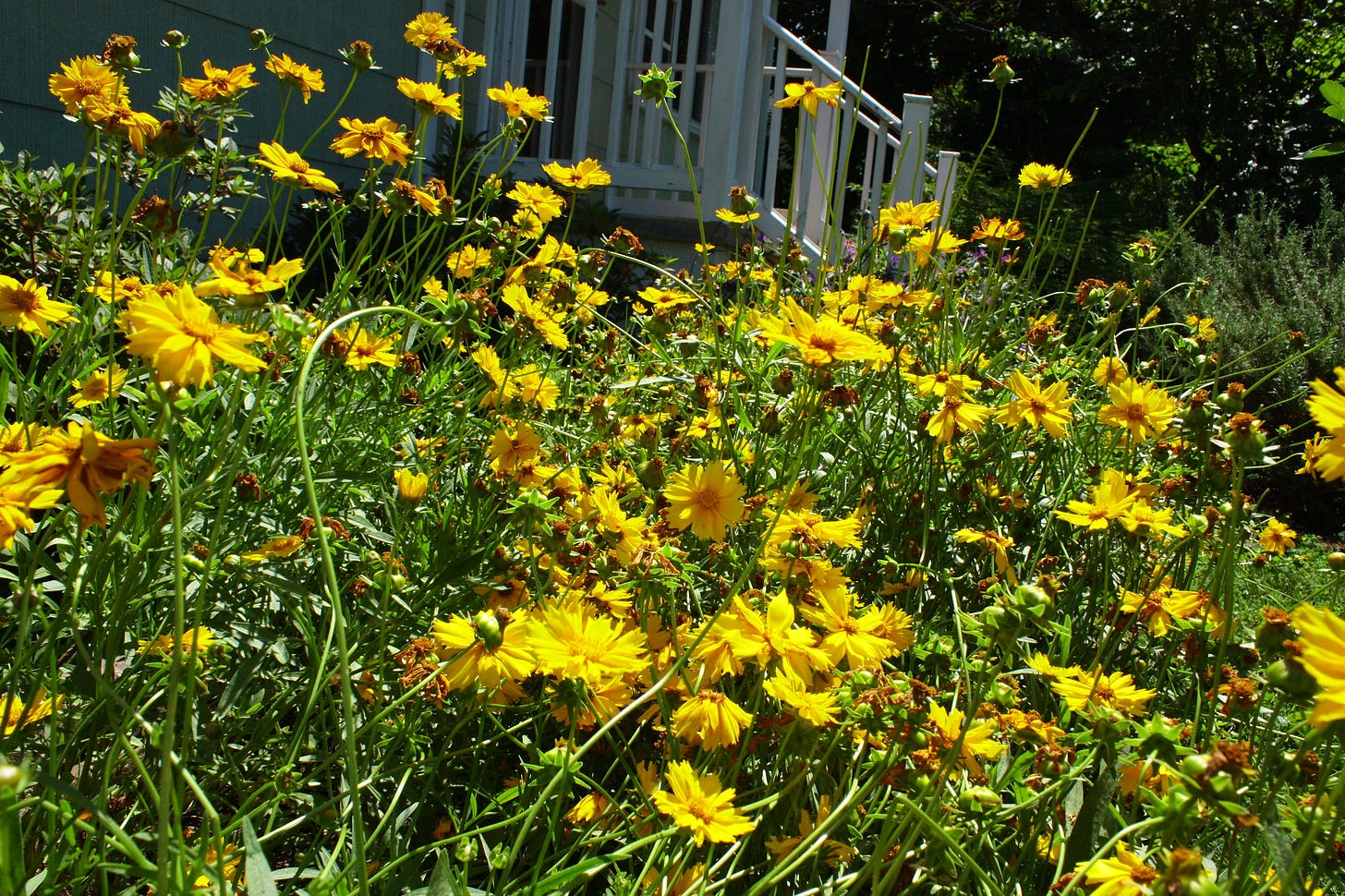When I talk to people about how evil their lawns are—and believe me, I do—the main mental barriers I encounter are:
Didn’t know there was something else I could do with my yard!
But lawns (and exotic ornamentals) are the most beautiful!
Americans have been conditioned to view lawns—and their accompanying imported perennials—as the landscaping gold standard since the colonists arrived. Our forebears believed that one of the best ways to convey one’s wealth was to surround one’s home with an expanse of green, useless turfgrass dotted with exotic flowers and shrubs. This belief has stayed with us, in a powerful way, some hundreds of years later. To wit:
The pernicious consequence of this landscaping standard is that we believe native plants aren’t beautiful. They’re too wild. Too “weed-like.” Too common.
Case in point: This weekend, I was in my front garden, taking stock of what I had. A neighbor walking his dog asked what I was doing, and I said I was making a plan to introduce more native plants in my yard. He immediately and audibly scoffed at me. “That doesn’t matter,” he said. “Some of the most beautiful trees here in Virginia are invasive. Mimosa trees? They’re lovely, lovely.”
He went on to tell me (mansplain, if ever there was a mansplain) that native plants weren’t important and bragged about all of the Asian exotic plants he had in his garden, including a “rare Japanese apricot tree” that he said he hoped “would soon take over the neighborhood.”
Suffice it to say, I was not impressed. Nor was I persuaded to take one of the root stocks of this “rare” tree he offered me.
But my neighbor’s attitude is commonplace among many gardeners. My own grandparents, both of whom were talented landscapers, prized their yard full of Asian ornamentals: camellias, hydrangeas, peonies, and so forth.
Fellow gardeners, we can’t go on like this. If we are to be good stewards of the little bit of land that we have, we have got to change our aesthetics. Handsome though we believe them to be, grass and Asian flowers aren’t supporting our suffering American ecosystems.
We can make a more moral choice in how we design our gardens, and it’s going to start with redefining what we regard as beautiful in our yards.
Consider the wild beauty of gardening with native plants, especially in contrast to the sterile misery of that McMansion yard shown above.
A backyard meadow from a garden designer in New York:
Beds of native perennials look wonderful when tightly massed together:
And a small-scale example from one of my neighbors (definitely not the aforementioned man), who has devoted an area of the front lawn to making a “pocket prairie” filled with pollinator-friendly native wildflowers:
Change is possible, but we’re going to have to think differently about beauty.
Recommended Reading
Nature’s Best Hope: A New Approach to Conservation That Starts in Your Yard, Douglas Tallamy
The Humane Gardener, Nancy Lawson
100 Easy-to-Grow Native Plants, Lorraine Johnson
The Bee-Friendly Garden, Kate Frey
Gardening with Native Plants of the South, Sally Wasowski








